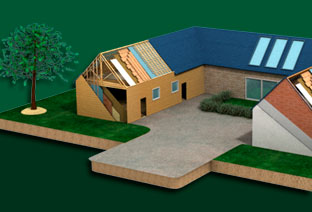“Hemp has a very long history as a French crop, going back before theMiddle Ages. To meet the personal needs of the farm holders, farms in every region had their own hemp fields, located on the best soils then profiting from the naturally produced fertilizers.Every part of the plantwas used: the hemp seed was pressed to yield oil for lighting and to make glue, soap,and later paint. The residual cake was woven into canvases of varying thickness. Sailing vessels and the military were the greatest consumers of hemp products for rope, sling, sails, bags, tents, clothes, hull caulking, fishing nets, saddles, etc. The peeled hemp stalk contains calorific cellulose that was used to brighten fires in homes and workshops, which could also be used to make sulfur-tipped matches. In 1668, Jean de La Fontaine mentioned its use to make cages and traps in his fable, “the Swallow and the Little Birds.”
This article istakenfrom : “Le Chanvre en France” – Author : Henri Alain Ségalen – Editions du Rouergue
Hemp has been an annual crop in Europe since theCelts arrival. Sowing is done between March and April, and the plant can be harvested in September or October. Wheat seeders are used for the seeding operation deep in the soil (50-55 Kg / hectares). Contrary to widespread belief, this plant doesn’t need much water during its growth process from June to August (flowering period). Hemp roots plunge deeply into the earth, up to 2 meters to reach nutriments. There is a wide range of hemp sizes depending on the variety. Some hemp plants can reach up to more than 3 meters high…
Industrial hemp is also a regulated professional activity. Only 30 types of hemp are authorized; only hemp with THC ratesunder 0,2% are registered within European law. In most cases, farmers agree with an acknowledged industrial corporation on the type of hemp seeds to plant.
With a short cycle of 1OO days, hemp culture is really valuable for farmers. The main issues are related to harvesting. The mechanized harvesting equipment is sensitive to the mowing of hemp due to the physical characteristics of the hemp fibers which are very resistant. For the last decade, significant changes have been made on agricultural vehicles and today this isn’t a stumbling block any more for large farms. Once the straw is dry, the farmer can constitute straw bales.
Dry hemp contains two parts:
- The first one is the BARK from which are extracted the hemp fibers used to produce hemp wool. This represents 30-35% of the global straw volume.
- INSIDE THE STEM, you can find the shives also called hemp hurd (“chènevotte in French”). They represent 65-70% of the global straw volume.
Hemp cultures main advantages :
- short culture process
- no treatmentduringgrowth
- goodweed management
- valuable harvest (fiber, seeds, wood)
- optimal rotations
- excellent soilamendment
- average return per hectare: 7-8 T of straw, 500kg-1T of seeds
- large scale of applications in the future














